#John Seeman
Text
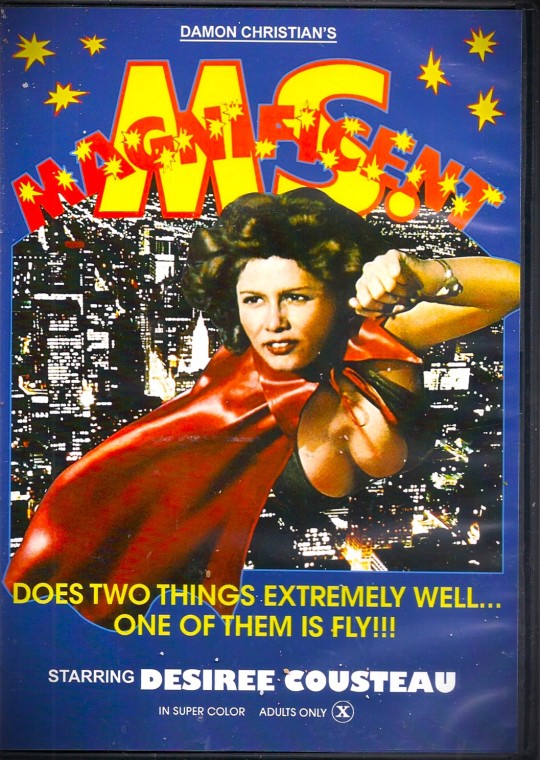
Bad movie I have Ms. Magnificent 1979 aka Superwoman
#Ms. Magnificent#Jesie St. James#Sharon Kane#Starr Wood#Jesse Adams#Vernon von Bergdorfe#John Seeman#Desiree Cousteau#Holly McCall#Mike Horner#David Morris#Larry Davis#Liza Dwyer#Freddi Nobodi#Damon Christian
4 notes
·
View notes
Text
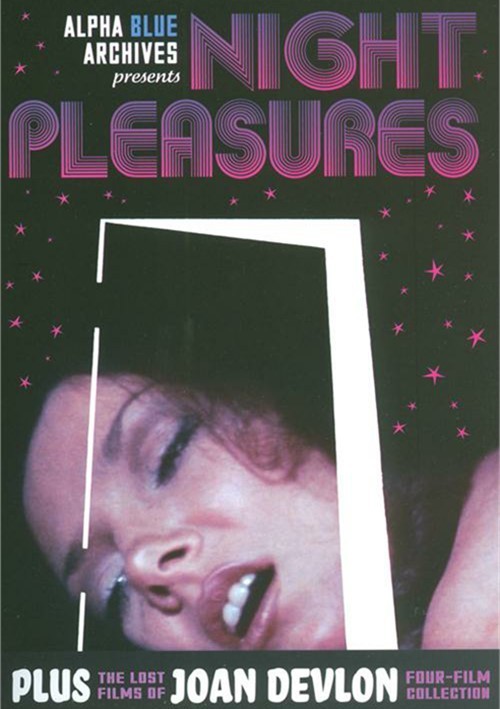
Adult Movie Posters
Night Pleasures (1976)
Where Unsaid Words Are Spoken And Unforgivable Dreams Are Felt!
Henning Schellerup - Joseph Drury - Daniel Cady - John Seeman - Melba Bruce - John Leslie - Joan Devlon - Desiree West - Susan Catherine
#MovPov13#AMP#1976#Henning Schellerup#Joseph Drury#Daniel Cady#John Seeman#Melba Bruce#John Leslie#Joan Devlon#Desiree West#Susan Cathrine
5 notes
·
View notes
Photo



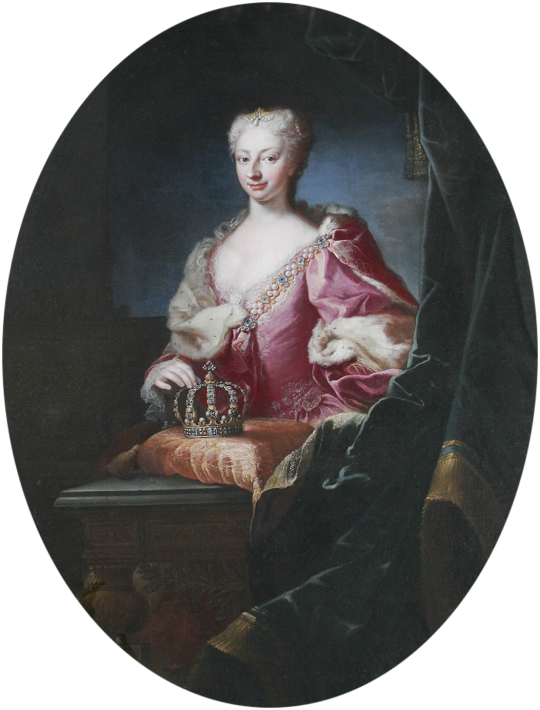
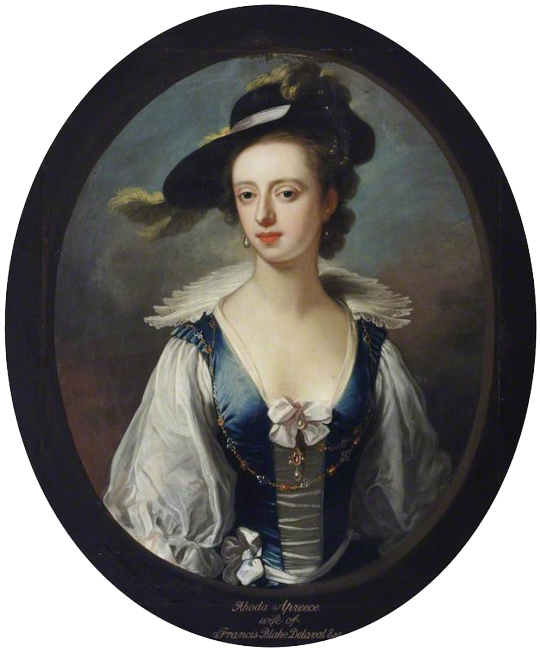
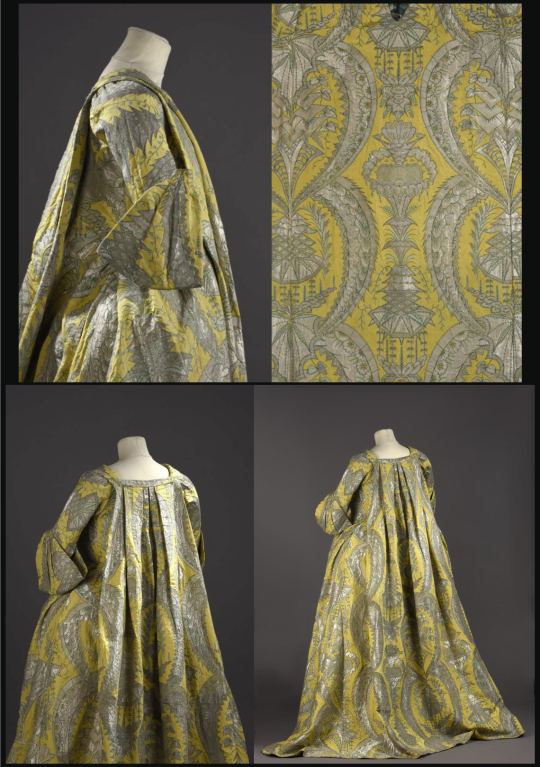
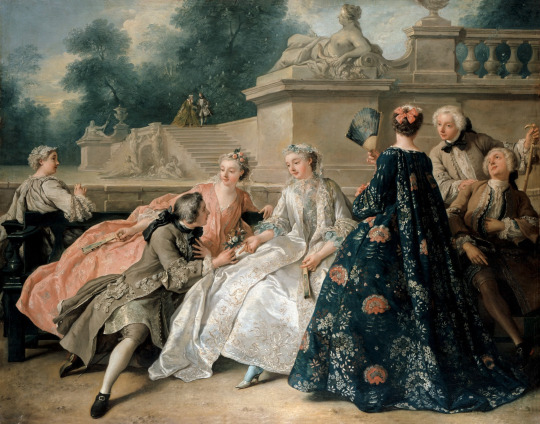



Early 1730s dresses (from top to bottom) -
1730 Tea Party at Lord Harrington's by C. Phillips detail (Yale Center for British Art, Yale University - New Haven, Connecticut, USA). Probably from Wikimedia; fixed spots with Pshop 1247X1623. There are many caps and veils, square necklines, and laced bodices with revers. But full-blown panniers are not to be seen.
1730 Marquise de Gueydan as Flora by Nicolas de Largillière (Musée Granee - Aix-en-Provence, Bouches-du-Rhône, Provence-Alpes-Côte d'Azur, France). From cutlermiles.com/portrait-of-marquise-de-gueydan-as-flora-nicolas-de-largilliere/ 1908X2484. She wears a stout Swiss belt and cleft coiffure that harken back to the late Louis XIV era.
ca. 1730 Empress Elisabeth Christine by Johann Gottfried Auerbach (auctioned, probably by Lempertz). From Wikimedia trimmed 1715X2352. She wears a round skirt and a scoop neckline.
ca. 1730 Polyxena of Hesse-Rotenburg, Queen of Sardinia by Maria Giovanna Clementi (location ?). From tumblr.com/blog/view/jeannepompadour; enlarged by half 1053X1385. Her dress has a deep V neckline filled in by a modesty piece.
ca. 1730 Rhoda Apreece, Mrs Francis Blake Delaval attributed to Enoch Seeman the Younger (Seaton Delaval - Seaton Sluice, Northumberland, UK). From artuk.org; enlarged by half 994X1200. The ruff makes this a Van Dyck revival dress. The laced vest and jaunty hat lend a casual air to the portrait.
ca. 1730 Robe volante (Musée de la Mode - Paris, France). From fripperiesandfobs.tumblr.com-post-139802377452-robe-volante-ca-1730-from-the-palais-galliera 1140X1620. Dresses before the 1750s often had cuffs that could be substantial like these.
1731 Die Liebeserklärung by Jean François de Troy (Sanssouci, Stiftung Preußische Schlösser und Gärten Berlin - Brandenburg, Germany). From artsandculture.google.com/asset/die-liebeserklärung-jean-françois-de-troy/XAFpCyLiWrxHZw?h 3074X24.12. Known in the Anglophone world as “The Declaration of Love. The large patterns mark this as early century. The robe à la française is firmly established in the form it would take until the late Louis XVI period.
1731 Infanta Maria Teresa Antonia de Borbón by Jean Ranc (Museo del Prado - Madrid, Spain). From their Web site; removed spots and streaks with Photoshop 2621X3051. Spain was ruled by Borbóns after the last Habsburg was cleared out in the early 1700s.
1731 Julia Calverley, Lady Trevelyan, by Enoch Seeman the Younger (Wallington Hall - Wallington, Northumberland, UK). From nationaltrustcollections.org.uk/object/584399; erased navigation marks in corners & fixed spots w Pshop 1616X1992. Clasps replace lacing to close this bodice.
1731 Lady by John Vanderbank (location ?). From the Philip Mould Historical Portraits Image Library 920X1214. The dress is Van Dyck revival similar to the one worn by Rhoda Apreece.
#1730s fashion#Georgian fashion#Louis XV fashion#Rococo fashion#C. Phillips#Marquise de Gueydan#Nicolas de Largillière#Kaiserin Elisabeth Christine#Johann Gottfried Auerbach#scoop neckline#Polyxena von Hesse-Rotenburg#Maria Giovanna Clementi#Rhoda Apreece#Enoch Seeman the Younger#feathered hat#robe volante#The Declaration of Love#Jean François de Troy#robe à la française#Infanta Maria Teresa Antonia de Borbón#tabbed bodice#Jean Ranc#Julia Calverley#cap#John Vanderbank
60 notes
·
View notes
Text
[Late Post] Champaign Ch R1: Mikelis Libietis/Luca Margaroli def. Johannes Seeman/Wally Thayne 6-4, 6-1 Match Stats

📸 ATP Challenger Livestream (via website)
The first set went really neat until it all boiled down to M. Libietis/Margaroli's ability to came back from several game points down, forcing a deciding point after Margaroli's winner, took the set and set the pace for the rest of the match. Here was how everything unfolded according to the stats.
It turned out that M. Libietis/Margaroli got even more solid in the second set, in all aspects possible. They won 85% of their points from their first serves, it was that effective until Seeman/Thayne got overwhelmed in a way or another. Add that with the 4 aces, and it showed how accurate their service games were.
Even their return games were "superior" at this rate: although they converted 50% of their break points thanks to their rally control, Seeman/Thayne even did not have the room to respond any further, hence they did not have the chance to break.
M. Libietis/Margaroli will then face the first seeds Robert Galloway/Hans Hach Verdugo, who earlier defeated the Lock brothers (Benjamin Lock/Courtney John Lock) 6-2, 6-2. A tough test awaits both of them, but this surely be exciting!
#atp world tour#atp tour#atp challenger#atp challenger tour#tennis updates#match stats#champaign challenger#mikelis libietis#luca margaroli#johannes seeman#wally thayne#WatchChallengersFolks#ChallengerMatters#WatchMoreDOUBLES
0 notes
Photo
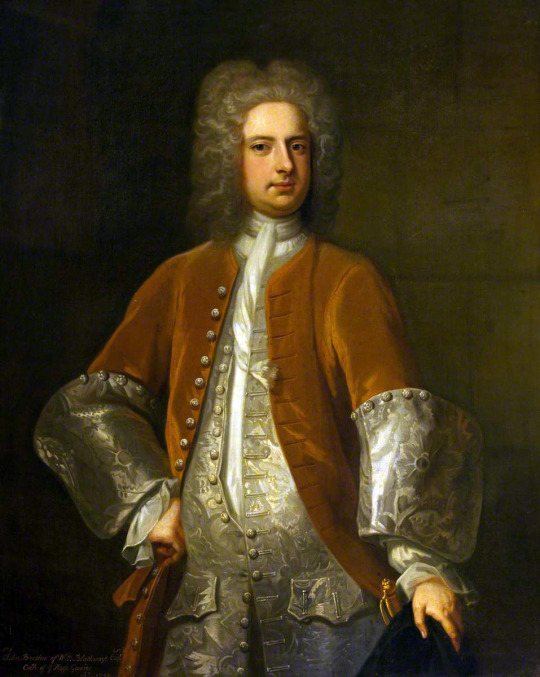
ab. 1720-1729 Attributed to Enoch Seeman the Younger - John Blathwayt
(Dyrham Park)
36 notes
·
View notes
Photo

Upcoming 2020 Exhibitions
We’re pleased to announce a selection of upcoming 2020 exhibitions. This winter, we welcome back our iconic Kehinde Wiley painting Napoleon Leading the Army over the Alps (2005), which for the first time at the Brooklyn Museum will be presented in dialogue with its early nineteenth-century source painting, Jacques-Louis David’s Bonaparte Crossing the Alps (1801). We also look at our collection from new perspectives with focused exhibitions that present historical works through a contemporary, multifaceted lens. Out of Place: A Feminist Look at the Collection examines nearly 50 collection works using an intersectional feminist framework. Climate in Crisis: Environmental Change in the Indigenous Americas is an installation of the Museum’s Arts of the Americas collection which reconsiders indigenous art from the perspective of the prolonged and ongoing impact of climate change and colonization. Contemporary artist and MacArthur Fellowship recipient Jeffrey Gibson mines our collection and archives to examine collecting practices and reinterpret historical representations of indigenous communities. We also present African Arts—Global Conversations, a cross-cultural exhibition pairing diverse African works with collection objects made around the world, and Striking Power: Iconoclasm in Ancient Egypt, which examines the damage to sculptures and reliefs in ancient Egypt as a way of also exploring twenty-first-century concerns and struggles over public monuments and the destruction of antiquities.
In March, we celebrate the iconic history and trailblazing aesthetics of Studio 54 in a special exhibition featuring never-before-seen archival materials, video, photography, fashion, and more. We will also present the first solo museum exhibition dedicated to Brooklyn-based photographer John Edmonds, winner of our inaugural UOVO Prize for an emerging Brooklyn artist. And in the fall of 2020, we are proud to mount the first career retrospective of the work of Lorraine O’Grady, one of the most significant figures in contemporary performance, conceptual, and feminist art.
“We’re thrilled to present a roster of exhibitions next season that are in conversation with our collection in fresh and exciting ways,” says Anne Pasternak, Shelby White and Leon Levy Director, Brooklyn Museum. “As an encyclopedic museum, we’re always looking for new ways to examine our collection and open it up to include narratives that have historically been left out of the canon. In 2020, we’re committed to exhibitions that do just that: telling stories that are rarely told, through the eyes of contemporary artists.”

Jacques-Louis David Meets Kehinde Wiley
January 24–May 10, 2020
Morris A. and Meyer Schapiro Wing, 4th Floor
This exhibition brings an iconic painting from our collection—Kehinde Wiley’s Napoleon Leading the Army over the Alps (2005)—into dialogue with its early nineteenth-century source painting, Jacques-Louis David’s Bonaparte Crossing the Alps (1801). The two paintings, displayed together for the very first time, are on view in consecutive exhibitions at the Château de Malmaison from October 9, 2019, to January 6, 2020, and at the Brooklyn Museum from January 24 to May 10, 2020. This focused exhibition questions how ideas of race, masculinity, representation, power, heroics, and agency play out within the realm of portraiture. The presentation at the Brooklyn Museum is the first time David’s painting is on view in New York, and Wiley marks this momentous occasion by consulting on the exhibition design. It includes videos incorporating Wiley’s perspectives on how the Western canon, French portrait tradition, and legacies of colonialism influence his own practice. The exhibition represents an intimate conversation between two key artists of the nineteenth and twenty-first centuries and illuminates how images construct history, convey notions of power and leadership, and create icons.
The exhibition is organized by the Brooklyn Museum and Musée national des châteaux de Malmaison and Bois-Préau. The Brooklyn presentation is curated by Lisa Small, Senior Curator, European Art, and Eugenie Tsai, John and Barbara Vogelstein Senior Curator, Contemporary Art, Brooklyn Museum.

Out of Place: A Feminist Look at the Collection
January 24–September 13, 2020
Elizabeth A. Sackler Center for Feminist Art, 4th Floor
This exhibition presents more than 50 works from across our collections. Following the 2018 exhibition Half the Picture: A Feminist Look at the Collection, Out of Place also explores collection works anew through an intersectional feminist framework. Out of Place features more than forty artists from remarkably different contexts whose unconventional materials and approaches call for a broader and more dynamic understanding of modern and contemporary art.
Examining how contexts change the way we see art, Out of Place: A Feminist Look at the Collection showcases artists who have traditionally been seen as “out of place” in most major collecting museums. The exhibition is organized around three distinct cultural contexts for making and understanding creativity—museums and art spaces, place-based practices, and the domestic sphere—and explores significant histories that have been, until recently, overlooked and undervalued, despite their influence outside of the mainstream. Out of Place traces how cultural institutions are challenged and changed by the ways artists work. Over half of the works in the exhibition are on view for the very first time, including important collection objects as well as significant new acquisitions, such as highlights from the recent Souls Grown Deep Foundation Gift of works by Black artists of the American South.
Artists featured include Louise Bourgeois, Beverly Buchanan, Chryssa, Thornton Dial, Helen Frankenthaler, Lourdes Grobet, Louise Nevelson, Dorothea Rockburne, Betye Saar, Miriam Schapiro, Judith Scott, Joan Snyder, and May Wilson, among others.
Out of Place: A Feminist Look at the Collection is curated by Catherine Morris, Senior Curator for the Elizabeth A. Sackler Center for Feminist Art, and Carmen Hermo, Associate Curator, Elizabeth A. Sackler Center for Feminist Art. Generous support for this exhibition is provided by the Helene Zucker Seeman Memorial Exhibition Fund.

Jeffrey Gibson: When Fire Is Applied to a Stone It Cracks
February 14, 2020–January 10, 2021
Arts of the Americas Galleries, 5th Floor
This exhibition presents new and existing work by artist Jeffrey Gibson alongside a selection from our extensive collection and archives. Gibson collaborated with historian Christian Crouch to organize this exhibition that examines nineteenth- and early twentieth-century museum collecting practices, and the historical representations of indigenous communities, through a contemporary lens.
Gibson, an artist of Choctaw and Cherokee descent, often incorporates elements of Native American art and craft into his practice. He regards these aesthetic and material histories as modern, innovative, global, and hybrid. The presentation includes collection objects such as moccasins, headdresses, ceramics, and parfleche, and examples of beadwork and appliqué, displayed alongside Gibson’s contemporary works, which take material and formal inspiration from these traditional artistic practices. The exhibition also includes rarely exhibited items from our archives that shed light on the formation of the Brooklyn Museum’s Native American collection in the early twentieth century by curator Stewart Culin. The archival selections by Gibson and Crouch aim to return the focus to the indigenous individuals represented within the archives, recovering those individuals’ previously overlooked narratives and presence.
By presenting his own work alongside key selections from our collection, Gibson offers a different perspective on historical objects within a museum setting—one that is not static or stuck in the past, but ever evolving and modern. He encourages visitors to question long-held categorizations and representations of Native American art and challenges our understanding of tradition, practice, craftsmanship, and art-making.
Jeffrey Gibson: When Fire Is Applied to a Stone It Cracks is organized by Jeffrey Gibson and Christian Crouch, Curatorial Advisor, with Eugenie Tsai, John and Barbara Vogelstein Senior Curator, Contemporary Art, and Erika Umali, Mellon Curatorial Fellow, with support from Nancy Rosoff, Andrew W. Mellon Senior Curator, Arts of the Americas, and Molly Seegers, Museum Archivist, Brooklyn Museum. Major support for this exhibition is provided by Ellen and William Taubman. Generous support is provided by the Brooklyn Museum’s Contemporary Art Committee, the FUNd, and Stephanie and Tim Ingrassia.
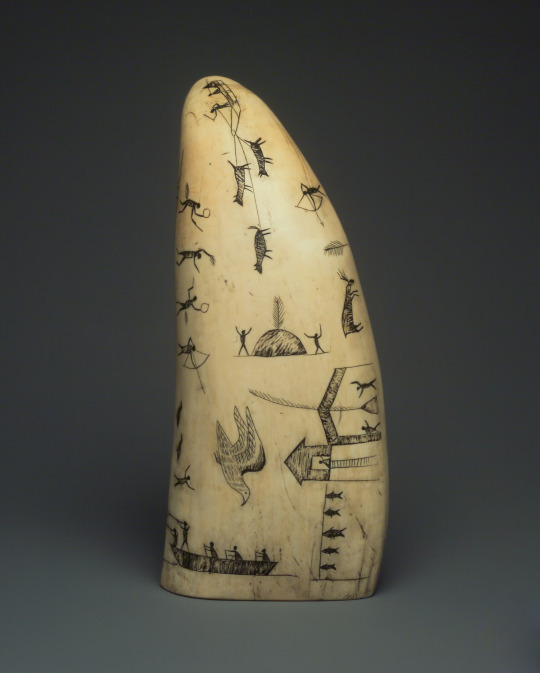
Climate in Crisis: Environmental Change in the Indigenous Americas
February 14, 2020–January 10, 2021
Arts of the Americas Galleries, 5th Floor
Climate change is having a severe impact on indigenous communities across the Americas, but this situation has an even longer history. The European conquest and colonization of the Americas beginning in the sixteenth century introduced ways of using and exploiting natural resources that clashed with indigenous ways of understanding and relating to the natural world. This exhibition draws upon the strength of our renowned collection to highlight indigenous worldviews about the environment, and the ongoing threat of ecological destruction.
The installation includes work spanning 2,800 years, and explores how indigenous beliefs, practices, and ways of living are impacted by the climate crisis, ranging from the effects of melting sea ice and overfishing for Native peoples of the Arctic and Pacific Northwest to illegal logging and deforestation for indigenous communities in the Amazon. This environmental perspective reveals the fundamental disparities between the misuse of natural resources over the past five hundred years and indigenous communities’ profound relationships with their ancestral homelands. In addition, the exhibition incorporates voices of contemporary indigenous activists to underscore the work being done today to counter the climate crisis and protect the planet.
Climate in Crisis: Environmental Change in the Indigenous Americas is curated by Nancy Rosoff, Andrew W. Mellon Senior Curator, Arts of the Americas, with Joseph Shaikewitz and Shea Spiller, Curatorial Assistants, Arts of the Americas and Europe.

African Arts—Global Conversations
February 14–November 15, 2020
Lobby Gallery, 1st Floor, and collection galleries on the 2nd, 3rd, and 5th Floors
African Arts—Global Conversations seeks to bring African arts into broader, deeper, and more meaningful and critical conversations about the ways that art history and encyclopedic museums have or have not included African artworks. It is the first exhibition of its kind to take a transcultural approach pairing diverse African works across mediums with objects made around the world―all drawn from our collection. It puts African and non-African arts from distinct places and time periods in dialogue with each other in an introductory gallery, as well as in “activation spaces” in the galleries dedicated to European Art, Arts of the Americas, American Art, Ancient Egyptian Art, and Arts of Asia. Duos, trios, and other groupings of objects from a wide variety of locations worldwide prompt conversations about history, art, race, power, design, and more. Approximately 33 artworks are presented (including 20 by African artists), as well as a selection of historical books. Highlights include the celebrated eighteenth-century sculpture of a Kuba ruler, a selection of fourteenth- to sixteenth-century Ethiopian Orthodox processional crosses, and a midtwentieth-century mask from Sierra Leone’s Ordehlay (Ode-Lay) society. Also on view are works by contemporary artists Atta Kwami, Ranti Bam, Magdalene Odundo OBE, and Taiye Idahor.
African Arts—Global Conversations is curated by Kristen Windmuller-Luna, Sills Family Consulting Curator, African Arts, Brooklyn Museum.

Studio 54: Night Magic
March 13–July 5, 2020
Morris A. and Meyer Schapiro Wing and Iris and B. Gerald Cantor Gallery, 5th Floor
Studio 54: Night Magic is the first exhibition to trace the groundbreaking aesthetics and social politics of the historic nightclub, and its lasting influence on nightclub design, cinema, and fashion. Though it was open for only three years—from April 26, 1977, to February 2, 1980—Studio 54 was arguably the most iconic nightclub to emerge in the twentieth century. Set in a former opera house in Midtown Manhattan, with the stage innovatively re-envisioned as a dance floor, Studio 54 became a space of sexual, gender, and creative liberation, where every patron could feel like a star. From the moment Studio 54 opened, its cutting-edge décor and state-of-the-art sound and lighting systems set it apart from other clubs at the time, attracting artists, fashion designers, musicians, and celebrities whose visits were vividly chronicled by notable photographers. In addition to presenting the photography and media that brought Studio 54 to global fame, the exhibition conveys the excitement of Manhattan’s storied disco club with more than 600 objects ranging from fashion design, drawings, paintings, film, and music to décor and extensive archives.
Studio 54: Night Magic is curated and designed by Matthew Yokobosky, Senior Curator of Fashion and Material Culture, Brooklyn Museum. Lead sponsorship for this exhibition is provided by Spotify.

John Edmonds: A Sidelong Glance
May 1, 2020–February 7, 2021
Stephanie and Tim Ingrassia Gallery of Contemporary Art, 4th Floor
John Edmonds is the first winner of the UOVO Prize, a new annual award for an emerging artist living or working in Brooklyn. This is Edmonds’s first solo museum exhibition and features approximately 25 new and recent photographic works that include portraiture and still lifes of Central and West African sculptures. Best known for his sensitive depictions of young Black men, Edmonds uses photography and video to create formal pictures that challenge art historical precedents and center Black queer desire. He often uses a large-format camera to heighten the staging of his subjects and explore their sculptural potential, making reference to religious paintings and modernist photography. Highlighting markers of Black self-fashioning and community— hoodies, du-rags, and more recently, African sculptures— Edmonds’s works point to individual style and a shared visual language across time.
John Edmonds: A Sidelong Glance is curated by Ashley James, former Assistant Curator, Contemporary Art, and Drew Sawyer, Phillip Leonian and Edith Rosenbaum Leonian Curator, Photography, Brooklyn Museum. Leadership support for the UOVO Prize is provided by UOVO.
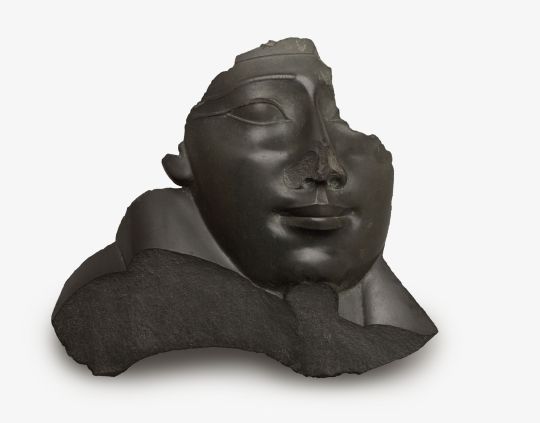
Striking Power: Iconoclasm in Ancient Egypt
Opening May 22, 2020
Egyptian Galleries, 3rd Floor
This exhibition, which draws from our renowned Egyptian collection, seeks to establish a context for considering contemporary concerns and struggles over public monuments and damage to antiquities. Striking Power: Iconoclasm in Ancient Egypt explores patterns of organized campaigns of destruction to sculptures and reliefs motivated by shifting ideologies, politics, and crime in ancient Egypt, over a 2,500-year period. Presenting approximately 60 whole and damaged masterpieces of Egyptian art, the exhibition explores the damage that occurred during and after the rule of Pharaohs, with particular focus on the contested reigns of Hatshepsut (circa 1478–1458 B.C.E.) and Akhenaten (circa 1353–1336 B.C.E.). Targeted damage to sculptures typically occurred around a figure’s nose, which ancient Egyptians believed would remove the sculpture’s supernatural ability to breathe and therefore prevent the deceased figure from interacting with the human world. The exhibition explores the notion of public approval of iconoclasm and poses the question, who has the power to bring down or destroy images? Opinions about iconoclasm hinge on questions of whose narrative dominates public space. Many of the same questions about public art that concern the contemporary world, such as the role that U.S. Confederate monuments should play in today’s publically shared spaces, are illuminated through the lens of ancient iconoclasm.
Striking Power: Iconoclasm in Ancient Egypt is organized in collaboration with the Pulitzer Arts Foundation and is curated by Edward Bleiberg, Senior Curator of Egyptian, Classical, and Ancient Near Eastern Art, Brooklyn Museum.

Lorraine O’Grady: Both/And
November 20, 2020–April 11, 2021
Elizabeth A. Sackler Center for Feminist Art, 4th Floor
Lorraine O’Grady: Both/And is the first comprehensive retrospective of one of the most significant figures in contemporary performance, conceptual, and feminist art. For four decades, from the anger and hilarity of the early guerrilla performance Mademoiselle Bourgeoise Noire, to the joy and complexity of Art Is… on Harlem’s streets, to the haunting alternations in her single-channel video Landscape (Western Hemisphere), O’Grady has delved fearlessly into a range of timely questions: Black subjectivity (especially Black female subjectivity), diaspora, hybridity, art’s guiding concepts and institutions (from modernism to the museum), and the intersection of self and history. By putting contradictory ideas into play—black and white, self and other, here and there, West and non-West, past and present—and allowing them to interact with each other without expecting a concrete resolution, O’Grady’s work aims to replace the dualistic, “either/or” of Western thought with a productive, open-ended “both/and.” The urgency of the ideas she explores is perhaps the reason that her work is being newly embraced by a younger generation of artists who find much to learn from a practice that upends the fixed positions of power that structure our culture—while bringing into focus the poignancy of the lives that have been lived within these frameworks.
The exhibition includes twelve of the artist’s fourteen major projects, accompanied by a selection of material from her rich archive. It is accompanied by a catalogue documenting the full span of O’Grady’s artistic career, the first publication to do so, with essays by Malik Gaines, Harry Burke, Zoe Whitley, Catherine Morris, and Aruna D’Souza, along with a conversation between O’Grady and Catherine Lord.
Lorraine O’Grady: Both/And is organized by Catherine Morris, Senior Curator for the Elizabeth A. Sackler Center for Feminist Art, Brooklyn Museum, and writer Aruna D’Souza. Leadership support for this exhibition is provided by The Kaleta A. Doolin Foundation. Major support is provided by the Elizabeth A. Sackler Museum Educational Trust. Generous support is provided by Shelley Fox Aarons and Philip Aarons.
We hope to see you at the Museum soon!
Illustrated, from top:
Rose Hartman (American, born 1937). Bianca Jagger Celebrating her Birthday, Studio 54, 1977. Black and white photograph. Courtesy of the artist. © Rose Hartman
Kehinde Wiley (American, born 1977). Napoleon Leading the Army over the Alps, 2005. Oil on canvas. Brooklyn Museum, Partial gift of Suzi and Andrew Booke Cohen in memory of Ilene R. Booke and in honor of Arnold L. Lehman, Mary Smith Dorward Fund, and William K. Jacobs, Jr. Fund, 2015.53. © Kehinde Wiley. (Photo: Brooklyn Museum)
Lourdes Grobet (born Mexico City, Mexico, 1940). Untitled, from the series Painted Landscapes, circa 1982. Silver dye bleach photograph. Brooklyn Museum; Gift of Marcuse Pfeifer, 1990.119.12. © Maria de Lourdes Grobet. (Photo: Brooklyn Museum)
Jeffrey Gibson (American, born 1972). WHEN FIRE IS APPLIED TO A STONE IT CRACKS, 2019. Acrylic on canvas, glass beads and artificial sinew inset into custom wood frame. Courtesy of the artist and Kavi Gupta, Chicago. © Jeffrey Gibson. (Photo: John Lusis)
Eskimo artist. Engraved Whale Tooth, late 19th century. Sperm whale tooth, black ash or graphite, oil. Brooklyn Museum; Gift of Robert B. Woodward, 20.895. Creative Commons-BY. (Photo: Brooklyn Museum)
Kuba artist. Mask (Mwaash aMbooy), late 19th or early 20th century. Rawhide, paint, plant fibers, textile, cowrie shells, glass, wood, monkey pelt, feathers. Brooklyn Museum; Robert B. Woodward Memorial Fund, 22.1582. (Photo: Brooklyn Museum)
Guy Marineau (French, born 1947). Pat Cleveland on the dance floor during Halston's disco bash at Studio 54, 1977. (Photo: Guy Marineau / WWD / Shutterstock)
John Edmonds (American, born 1989). Two Spirits, 2019. Archival pigment photograph. Courtesy of the artist and Company, New York. © John Edmonds
Face and Shoulder from an Anthropoid Sarcophagus, 332–30 B.C.E. Black basalt. Brooklyn Museum; Charles Edwin Wilbour Fund, 37.1516E. (Photo: Brooklyn Museum)
Lorraine O'Grady (American, born 1934). Rivers, First Draft: The Woman in the White Kitchen tastes her coconut, 1982/2015. Digital chromogenic print from Kodachrome 35mm slides in 48 parts. Courtesy Alexander Gray Associates, New York. © Lorraine O’Grady/Artists Rights Society (ARS), New York
#brooklyn#studio54bkm#studio54#Kehinde Wiley#DavidxWiley#feminist art#jeffrey gibson#globalconversations#climate change#indigeneous art#native american#native american art#african arts#bkmafricanarts#john edmonds#bkmegyptianart#egyptian art#lorraine o'grady#brooklyn museum#museums#nyc#art#exhibitions
77 notes
·
View notes
Photo







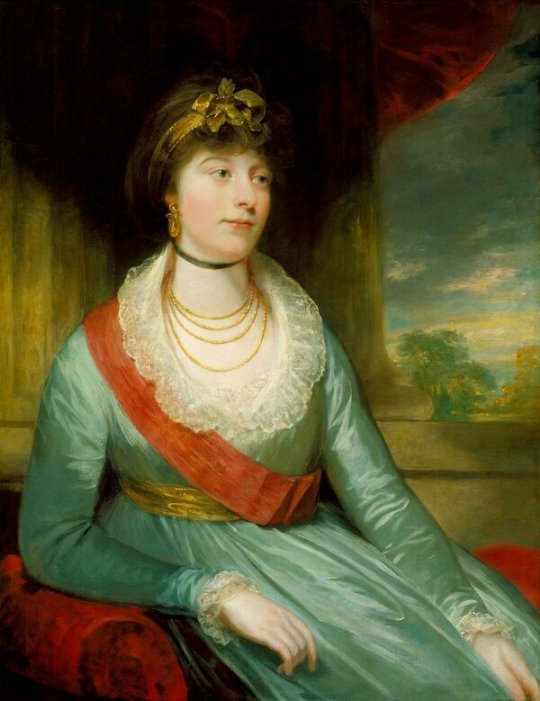


18th Century Portraits with blue dresses:
Marie Antoinette, by Élisabeth Louise Vigée Le Brun
Hannah Fayerweather Winthrop, by John Singleton Copley
Marie Gabriella Capet, Self Portrait
Maria Theresa, by Andreas Moller
Maria Johanna Gabriela of Austria, by martin Van Meytens
Émilie du Châtelet, by Marianne Loir
Elisabeth Sulzer, by Anton Graff
Charlotte of the United Kingdom, by William Beechey
Amelia of Breat Britain, by Jean-Baptiste van Loo
Henrietta Louisa Jeffreys, by Enoch Seeman
#marie antoinette#marie gabriella capet#maria theresa#princess charlotte#Maria Johanna Gabriela of Austria#Hannah Fayerweather Winthrop#Elisabeth Sulzer#Émilie du Châtelet#Henrietta Louisa Jeffreys#princess amelia#18th century art#18th century#long live the queue
306 notes
·
View notes
Text
MUSIC GAME
Rules: You can tell a lot about someone by the type of music they listen to Hit shuffle on your media player and write down the first 20 songs, then tag 10 people. No skipping.
I'm not tagging ten people but I love this idea. I'm also adding my commentary, because why not?
1.) I'm Not Okay - My Chemical Romance
(And old throwback I'll forever love!)
2.) Rocky Road To Dublin - The Dubliners
(The opening scene of my book is a bar fight set to this song.)
3.) Dark Times - The Weeknd Ft. Ed Sheeran
(Sooo bluesy.)
4.) 1755 - Moonspell
(This is the title track from the album of the same name. One of my top favorite albums of all time.)
5.) Ramble On - Led Zeppelin
(I've loved Led Zeppe for years, but this particular song is particularly special to me, because it was one of the songs played right before I got to watch Rick Springfield live. The best concert I have been to. It was free. I got to give him a hug when he came down into the crowd. Good times.)
6.) Iron - Woodkid.
(From the Assassin's Creed: Revelations trailer. This was the first AC game I played, and it's tied for being my favorite with Black Flag.)
7.) Life Finds a Way - Helion Prime
(A metal band inspired by the Riddick movies? Hell yeah. Also, this song inspired an idea for a short story/short film concept that spawned one of my favorite original characters that I have: a silver eyed, navy blue haired alien royal who flees her home planet after a bloody coup in which pretty much all of her family are killed. She crash lands on earth and befriends the disgruntled veteran who saves her.)
8.) Nymphetamine Fix - Cradle of Filth
(This is still one of the most magnificent examples of genuinely poetic, gothic music I've ever heard. It's been a fav for years.)
9.) Stay - Poets of the Fall.
(Pretty sure these guys have taken the spot of being my favorite band and if they're not my favorite, they're 100% in the top 10. Do yourself a favor and go listen to their whole discography. I have ALL of their songs on my phone. Fans of the game Alan Wake will recognize them as Old Gods of Asgard.)
10.) Long Way Down - The Evil Within Sountrack
(ONE OF THE BEST GAME INTROS EVER!)
11.) So Sorry To Say - Celldweller
(I have listened to Celldweller for well over a decade. The self-titled debut album is another one of my all time favorites. Celldweller is also the first band/artist I really discovered on my own so the music is particularly special to me.)
12.) Broken Wings - Evergrey
"From loss into your embrace/ I fled the fear and the dark of days/ Like an angel of fallen grace/ My broken wings can't hold my weight, no/ I came so close that I felt the flames/ I came so close that I'll never be safe again/ I'd give anything to find a way/ To leave the fear and evacuate.
You wanna talk about songs that have gotten me through some SHIT? This is one.)
13.) Cumberland Gap - Jason Isbell.
(I live in Kentucky. Right on Lake Cumberland. I was not born here, didnt grow here, never wanted to move here; I hated living here for YEARS. Still do some days. If there was a song to describe my feelings about this place, its this one. Also, Jason Isbell is an incredible songwriter. Cover Me Up, If We Were Vampires, Yvette, Elephant. Such great song writing.)
14.) Lili Twil - Myrath.
(Tunisian Power Metal with heavy middle eastern oriental influences. Good shit. This is one of my top favorites from them.)
15.) Weaker Girl - Banks
(This is hella relatable for me, and a lot of women, I think. Need a song that'll make you feel like a bad bitch? This is one of my favorites for that. "Im'ma need a bad motherfucker like me"? You bet your ass I do.)
16.) Don't Talk To Strangers - Rick Springfield
(See #5. I got to see this man alive and hearing the whole audience sing this word for word was amazing. Had it stuck in my head for a month afterwards. Even at 70 something Rick Springfield puts on one hell of a show.)
17.) Hozier - Dinner and Diatribes
(I grew up on blues. Hozier is that perfect bluesy, folksy goodness that gives me life.)
18.) Matisyahu - Jerusalem
(Hands down, one of my favorite artists. I'm not a religious person; I guess spiritual would be a more apt word, and this man's music is just so, so special. I had a teacher in 7th grade show me this song, and I've been listening ever since. This is a song I listen to when I really need a pick me up.
19.) 'Til It's Gone - Yelawolf
(This song kicks me right in the soul every time I hear it. It's so relatable to me. Know it word for word. I have a lot of heavy metal on this list, but hip-hop has a special place in my heart, too.)
20.) Fiddler On the Green - Demons and Wizards
(This song has a very distinct story... its one of the most unique songs I've heard in a long time. There's so much sadness and power to it. It's really something else.)
Bonus round because I wanted to see what else would come up:
1.) Get Down - Emigrate
(I fucking love Rammstein. I fucking love Richard Kruspe. This song is part of what inspire me to pick up bass. It's such a jam.)
2.) Seeman - Rammstein
(SPEAKING OF RAMMSTEIN. One of my absolute favorites of theirs. Till Lindemann is one of my all time favorite vocalists. Also, again on that bass... Oliver Riedel really knocked that intro out of the park.)
3.) Enola Gay - Sugizo
(Most people know Sugizo from either Luna Sea or X Japan. He's got a lot of really unique and beautiful solo work. This song is one. In my 11th grade English class, at one point in the semester we had to choose a book to read and then take a test over it. I chose Hiroshima by John Hersey -I was the only one to do so, as it was the most difficult read out of the books we could choose from- and I listened to this song on repeat through the whole process of reading it. I really feel like it captures the anguish Japanese people went through in the weeks after the bombs dropped. It definitely gave me a new perspective on the whole ordeal. What they went through was horrible, and I think the U.S. really opened up a can of worms by bringing nuclear weapons to the table when it comes to conflicts and war.)
4.) Romance - Buck Tick
(Another amazing Japanese group. Freaking love this song.)
5.) Bitter Pill - Billy Idol
(This song is so fucking good and it reminds me of my best friend. It's like he took my love and soul deep appreciation for her and put it into words. I really love it.)
1 note
·
View note
Text
18 Wheels of Science Fiction: A Long Haul into the Fantastic Genre: Science Fiction Anthology
with Stories by Eric Miller, editor, John DeChancie, Del Howison, Bond Elam, Lisa Morton,
Paul Carlson, Janet Joyce Holden, Michael Bailey, Carla Robinson,
Jeff Seeman, Kate Jonez, Gary Phillips, Lucio Rodriguez, Terry Bisson, Eric Miller, Edward M. Erdelac, Michael Paul Gonzalez, Alvaro Zinos-Amaro, Sean Patrick Traver “…Definitely fun.” –Analog Science Fiction and Fact Take a trip…
View On WordPress
1 note
·
View note
Text

Francesca Cuzzoni (2 April 1696 – 19 June 1778)
Italian operatic soprano of the Baroque era.
Clearly, in her prime, Cuzzoni was a singer and artist of the first class. The well-known writer on singing, Giovanni Battista Mancini, gave a glowing testament to her art: "It is difficult to decide whether she excels more in slow or in rapid airs. A "native warble" enabled her to execute divisions with such facility as to conceal their difficulty. So grateful and touching was her natural tone that she rendered pathetic whatever she sang, when she had the opportunity to unfold the whole volume of her voice. Her power of conducting, sustaining, increasing, and diminishing her notes by minute degrees acquired for her the credit of being a complete mistress of her art. Her trill was perfect: she had a creative fancy, and a command of tempo rubato. Her high notes were unrivaled in clearness and sweetness, and her intonation was so absolutely true that she seemed incapable of singing out of tune. She had a compass of two octaves, C to C in alt. Her style was unaffected, simple, and sympathetic." Quantz wrote that "her style of singing was innocent and affecting" and that her ornaments "took possession of the soul of every auditor, by her tender and touching expression". (Wikipedia)
From our stacks: Illustration “Francesca Cuzzoni Sandoni. E. Seeman pinc.. J. Caldwall sculp.” from A General History of the Science and Practice of Music, By Sir John Hawkins. A New Edition, with the Author’s Posthumous Notes. Vol. I. London: Novello, Ewer & Co.; New York: J. L. Peters, 1875.
#francesca cuzzoni#francesca cuzzoni sandoni#music#singer#soprano#enoch seeman#seeman#james caldwall#caldwall#music history#singers#opera#opera singer#oepra singers#baroque#baroque music#book#books#old books#illustration#book illustration#italian#italian music#cuzzoni#detroit public library
47 notes
·
View notes
Photo

Bad movie I have Hardgore 1976 aka Horror Whore and Sadoasylum
#Hardgore#David Book#Joan Devlon#Dianne Galke#Justina Lynne#Turk Lyon#Bunny Savage#Toni Scott#John Seeman
13 notes
·
View notes
Photo

Tales for the Camp Fire: A Charity Anthology Benefitting Wildfire Relief, edited by Loren Rhoads, Tomes & Coffee Press, 2019. Cover art by Helge Balzer, info: ellderet.com/campfire.
Scary Stories for a Good Cause. From Bram Stoker Award-nominated editor of the cult magazine Morbid Curiosity comes Tales for the Camp Fire, a new charity anthology of short stories to help support wildfire relief efforts. Through these pages roam werewolves, serial killers, a handful of ghosts, plenty of zombies, Cthulhu cultists, mad scientists, and a pair of conjoined twins. In November 2018, fire broke out on Camp Creek Road and raced through Butte County, California. By the time the fire was extinguished, the town of Paradise had been scoured from the map. Nearly 100 people died. Damage ran to an estimated $16 billion. The disaster has been named the Camp Fire, in memory of its place of origin. The horror writers of Northern California rallied to raise money for the survivors. Tales for the Camp Fire ranges from fairytale to science fiction, from psychological terror to magical realism, from splatterpunk to black humor, all rounded out by a messed-up post-apocalyptic cookbook. All profits from the sale of this anthology will be donated to Camp Fire relief and recovery efforts.
Contents:
Preface: In the Face of the Fire — Loren Rhoads
Introduction: California's Worst Natural Disaster — Chad Schimke
Cooking with Rodents — Nancy Eychemendy
The Ninth Skeleton — Clark Ashton Smith
The Wolf Who Never Was — John McCallum Swain
The Quarry — Ben Monroe
Seven Seconds — Erika Mailman
The White Stuff — Gerry Griffiths
Still Life with Shattered Glass — Loren Rhoads
Fable of the Box — Eric Esser
Ada, Awake — L.S. Johnson
Graffiti Sonata — Gene O'Neill
Jphn Wilson — Clifford Brooks
River Twice — Ken Hueler
Leaving the #9 — E.M. Markoff
Folie à Deus — Ross E. Lockhart
Unheard Music in the Dank Underground — Sumiko Saulson
Mukden — Sean Patrick Hazlett
Little Pink Flowers — Roh Morgon
Road Kill — Jeff Seeman
The Relic — Crystal M. Romero
The Twins — G.O. Clark
Vivified — Chad Schimke
The Patron — Anthony DeRouen
My True Name — John Claude Smith
You'll Never Be Lunch in This Town Again — Dana Fredsti
18 notes
·
View notes
Text
Today in “Eighteenth-Century Women Who Could Pull a Mulan”

^Portrait of Mrs. Allen, John Singleton Copley, 1763
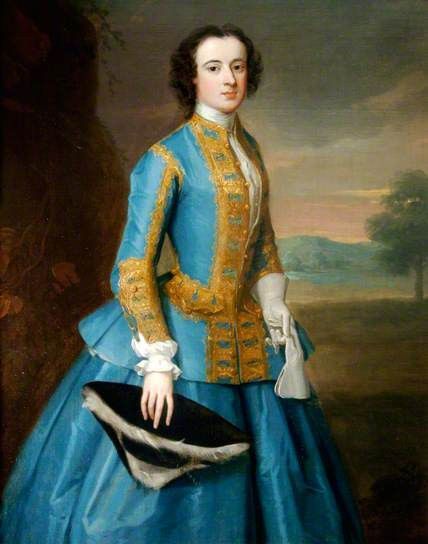
^ Portrait of a Lady in a Riding Habit by Enoch Seeman the younger

^Louise-Elisabeth de France, duchess of Parma by Jean-Marc Nattier, 1760
#it helps that the last two are wearing masculine-styled riding habits#art#art history#fashion history#wtf
12 notes
·
View notes
Note
🎵Hit shuffle on your playlist and list the first 7 songs and memories attached to them.🎵 Then leave this in the askbox of 7 people you follow
1. Scars to your beautiful (Alessia Cara)
I listen this song for the very first time 1 month later i stopped self harm, the first i thought is that it was really sad and beautiful song, now it gives me good energy and joy everytime i listen to it! I love it!!!
2. Tokyo (Imagine Dragons)
Love it since the first time i listened it. I always remember my travels around Europe and Spain everytime i listen to it! Really funny and fantastic song
3. Klavier (rammstein)
Is this one of their most underrathed songs? It is. Love it, the first time i listened to it i was playing with my brother to this old game called Doom, so many good memories with this one…. i usually listen to it five times or more in a day.
4. I cum Blood (Cannibal corpse)
The first time i listened to it i was like WTF?! I discovered this bad from this song and i spent the whole afternoom listening to them at full volumen as my mother was yelling me for it (xD) Sorry mom
5. Black fire upon us (Dethklok).
Okay like, i watched this show MANY times, (and so you should) everytime i listen to this song i hear Nathan Explosion voice ``BRUTAL´´ or ``That´s doable´´
6. John Wayne (Lady Gaga).
Am i a rider cowboy with guns in my shoes? Yes i am.
7. @maplesyrup-olliepop bass.
I have every single audio she has sent to me, i love them!!!! The ones of Ghost songs are definetly the best. Her Seeman versión always make me feel nostalgic about Galicia (a región from Spain with a big aesthetic for me
Thank you so much for the ask! I´m sorry it take that long to answer :3
4 notes
·
View notes
Text
Tagged by: @pacfoot
rules: answer these 21 questions, then tag 21 people you want to get to know better.
Nickname: I get called Liv by friends but my family calls me Viva, my name is Olivia and my brother had a speech impediment as a child so all he could say was Viva and it stuck
Height: 5'5'' so I'm not short
Last Movie I Saw: Once Upon a Deadpool and it was actually hilarious
Last thing I googled: the DS9 section on ao3 bc I'm trash
Favorite Musician: John fucking Denver I will fight you he is a bean and I love country music, yee yee!
Song stuck in my head: Let's Stay Together by Al Green
Other Blogs: I used to run a blog only of pictures of my dog because my dad works on the road and likes to see posts of him
Do I get asks: very rarely but I appreciate the ones I do get.
Following: 129 because I never clear out my following list bc laziness
Amount of sleep: 5 to 6 hours during the week and 9 to 10 on weekends
Lucky number: 7, duh.
What I'm wearing: thong and a t shirt
Dream trip: back to Barbados plss
Dream Job: one of those lounge singers that gets paid to preform on cruise ships and fancy parties
Favorite Food: tomato basil soup and a grilled cheese!!!
Play an instrument: Yes, clarinet, tenor sax, and I'm gonna have to learn piano when I go to college
Language: English, and I can read German really well but not so much with speaking it.
Favorite songs: Africa - Toto, Let it Be/Sunshine on my Shoulders- John Denver Once I was Loved - Melody Gardot Seeman - Rammstein, O Superman Laurie Anderson
My Aesthetic: Neon lights, fluffy things, pink, blue, magenta and red, Cyberpunk/90's anime/neon noir, rainy nights and dark streets, vaporware-esque
Random Fact: I once got Homeland security called to my high school along with OSHA and our local police and fire department BUT I didn't get in any trouble and it was actually a really educational experience
Who I'm Tagging: @ladyvean @welcome-to-a-nuclear-winter @fandom-trash-and-laughs you guys don't have to, it's all just for funsies!
3 notes
·
View notes
Photo

Follower of Enoch Seeman, ‘Portrait of Elizabeth Allen’, 1700s, sold for 2,000 GBP at Sotheby’s Two Great Scottish Property Auctions, March 2017.
Elizabeth Allen was the second wife of Alexander Forbes, 4th and last Lord of Pitsligo, who participated in the Jacobite rebellion. Alexander traveled to France when he was young, obtaining there a love of writing - eventually culminating in his first published work, Essays Moral and Philosophical. He was also a friend of the Stuart family, twice taking up arms to rebel; but when it failed, he moved into hiding around the moors of Pitsligo, disguised as a hermit, then later living under the name ‘Mr. Brown’ with his son John. He narrowly avoided capture in 1756, hiding in a small recess behind a bed when a search party came to comb the home in which he lived. He died, presumably never captured, in 1762, with one son by his first wife, Rebecca Norton. (From Henderson, T. M. (1900). Dictionary of National Biography, vol. 19. (pg. 377).
His son retained the title of ‘Master of Pitsligo’, and the property moved by descent through William Forbes the Younger (b.1773 - d.1828) into the Fettercairn House, owned by Miss Williamina Belsches (b. 1776 - d.1810), whom William fell in love with and eventually married - much to the chagrin of Sir Walter Scott, who was quite in love with her and wrote several works inspired by her.
The Estate of Fettercairn house was divided up and sold via Sotheby’s in March 2017.
#fettercairn house#scottish history#jacobite rebellion#enoch seeman#elizabeth allen#1700s#sothebys#unknown artist#known sitter
17 notes
·
View notes